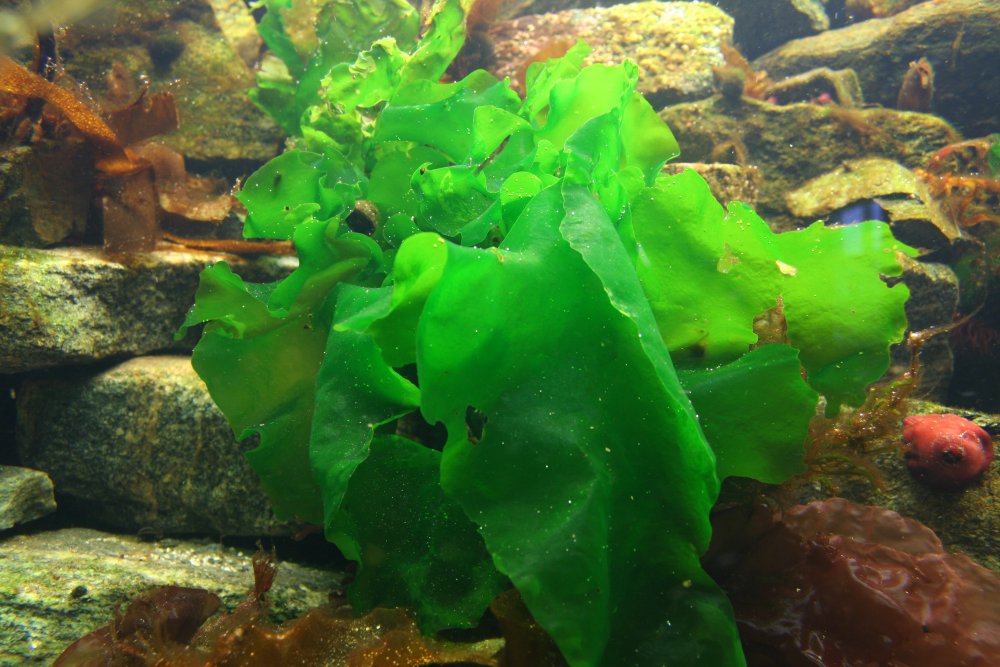
The sea lettuce fall into the class of chlorophyta. This green algea is widely distributed and popular in places ranging from Scandinavia to Japan. Some characteristics of this class are a divided holdfast, single thallus, and the leaf part can grow to 10 cm across to 15 cm long.
Common Name: Sea Lettuce
Scientific Name: Ulva Lactuca
Phylum: Chlorophyta
Family: Ulvaceae
Genus: Ulva
Species: Ulva Lactuca
Description: The sea lettuce is a bright green algae made of lobed, ruffle-edged leaves that are rough and sheet-like and looks like the leaves of a lettuce. The leaves appear flat, thin, broad, and are sometimes rounded or oval. Almost no stalk exists at the point of attachment, and no true roots are present. When dried by the sun, its color can range from white to black.
Size: can be up to 30 cm across
Habitat: High/low intertidal zones, can be seen in water up to 75 feet deep
Diet: Uses photosynthesis to convert sunlight into food energy, they are known as Photoautotrophic.
Physiological Features: Tolerant of nutrient loading that would suffocate other aquatic plants, it can actually thrive in moderate levels of nutrient pollution, the apperence of this algea indicates areas of high nutrients.
Reproductive Cycle: There are two generations of sea lettuce. Male and female gametophytes release movable gametes that swim towards the light. After fertilisation, zygotes swim away from the light to the sea bed. Then a holdfast develops and a sporophyte plant is formed.
This later releases zoospores which develop into gametophytes.
